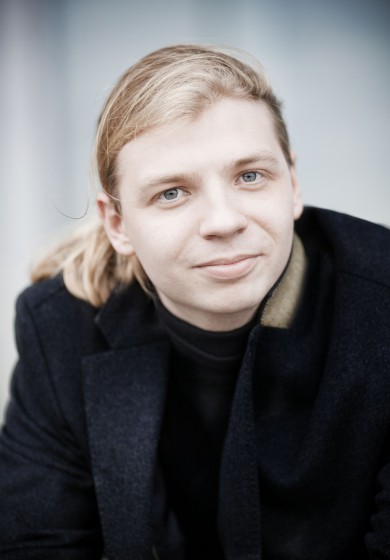Philadelphia Orchestra makes a spectacular showing at Kravis Center

Stéphane Denève,conducted the Philadelphia Orchestra in a Russian program Tuesday night at the Kravis Center in West Palm Beach. File photo: Tom Finnie
South Florida receives visits from some of the world’s finest classical ensembles, but rarely will listeners hear one at the level of the Philadelphia Orchestra.
Under principal guest conductor Stéphane Denève, the orchestra gave stirring performances of two popular Russian works Tuesday at the Kravis Center in West Palm Beach, playing with precision, interpretative unity and luxuriously rich tones
It’s possible that Shostakovich Fifth Symphony is performed more frequently in South Florida than Beethoven’s Fifth, with the latest performance coming in Miami earlier this season from the Cleveland Orchestra. But the Philadelphia Orchestra’s performance was a particularly distinguished one, with searing humanity, interpretive boldness and a dramatic sense that shaped each movement.
The Philadelphia Orchestra is famous for its string section, and the violins were nothing short of spectacular, playing with impressive unity and hitting high notes with almost unheard-of clarity. After the first movement’s assertive opening, the melody in the violins was cool, almost icy, with the music unfolding in an unhurried, unusually quiet manner. As winds joined in, they were rich and sonorous in their dissonant chords.
The quiet restraint of much of the movement left room for a tremendous buildup to the movement’s climax, with Denève leading a harrowing acceleration, with the music surging forward to fortissimo chords dominated by trumpets, trombones and tuba. After, in a comforting tone, a soft-edged melodies in flute and clarinet rested on a pillow of strings.
The Allegretto was a thumping, raucous, exaggerated few minutes, never going too far, but allowing Shostakovich’s sardonic spirit to emerge. The Largo built slowly toward an overpowering climax. The grave tones of the strings were clear, blended and rich in even the softest passages, acquiring a desperate pathos as the music built in volume and intensity. Denève sometimes just let the orchestra play, barely conducting as flute or clarinet played a bleak melody over a spare accompaniment in the strings.
The pianissimo tones of the Largo were suddenly broken up by the start of the last movement. The movement announced itself in the brass with a brutality rarely heard in this work, as Denève allowed trumpet and trombone to stomp over the rest of the orchestra with unusual, and highly effective, violence. The famously ambiguous ending of the movement sounded particularly subdued, as Denève emphasized the rote, repeated notes in the strings over the quasi-triumphant notes in the trumpet.
The concert opened with Rachmaninoff’s Piano Concerto No. 3, with the young Russian pianist Denis Kozhukhin as soloist. Clearly one of the instrument’s top virtuosos, he put on a performance that expressed all sides of this immensely popular work–the smooth, smoky melodies, the dashing technical display, the crashing brawls with the orchestra.
His virtuosity was such that he could draw whatever effect he wanted from the keyboard, not just fight his way through one of the most difficult works in the repertoire. He brought a lean, angular tone to the passagework, never allowing the complexities of Rachmaninoff’s music to get lost in a blur of notes.
He also showed a gift for the composer’s yearning melodies, playing with a natural feel for the music that conveyed the emotion without self-indulgence. He brought a smooth, liquid tone to the swirls of notes that accompanied melodies in the orchestra. In the first movement, where piano and orchestra spar in ascending, percussive passages, he drew enough power from the piano to more than hold his own.
The Philadelphia Orchestra has a historic connection to Rachmaninoff, who worked closely with the ensemble in performances and recordings of his works. (The orchestra gave the 1941 world premiere of his final composition, the Symphonic Dances.) In the concerto, the musicians played with a sensitivity and warmth that almost seemed to descend from that relationship with the composer. Even little details, like the brief burst of melody in the cellos during the piano’s opening theme, stood out for their phrasing and tonal beauty. In the climax at the end of the last movement, the violins gave a soaring, singing account of the broad main melody.
As an encore, Kozhukhin gave a restrained, songlike performance of Gluck’s “Dance of the Blessed Spirits” from Orfeo ed Euridice, arranged by Giovanni Sgambati.
The Philadelphia Orchestra performs again 2 p.m. Wednesday at the Kravis Center, playing Ravel’s Le Tombeau de Couperin, Debussy’s La Mer and Beethoven’s Symphony No. 7. kravis.org; 800-572-8471
Posted in Performances
Leave a Comment
Wed Feb 8, 2017
at 11:09 am
No Comments
